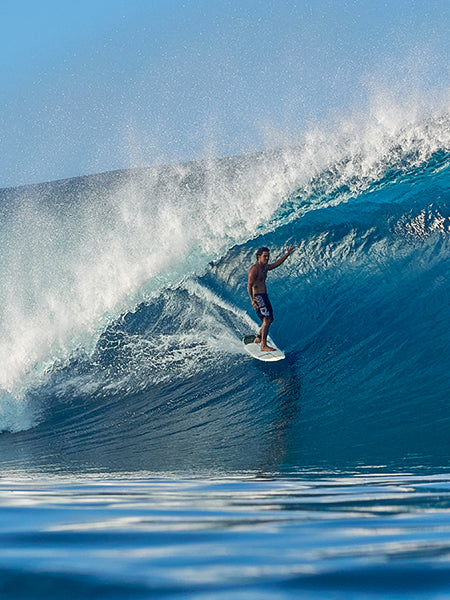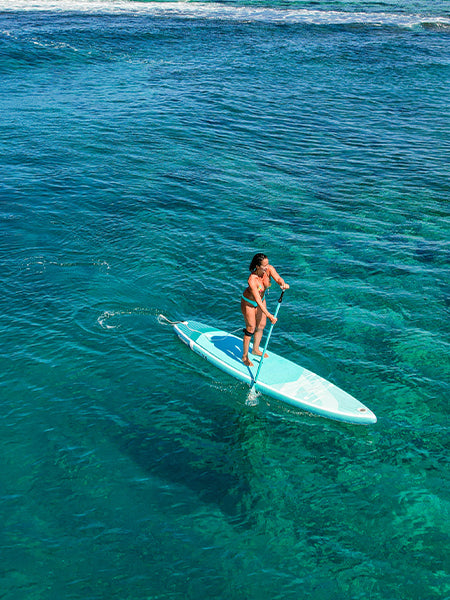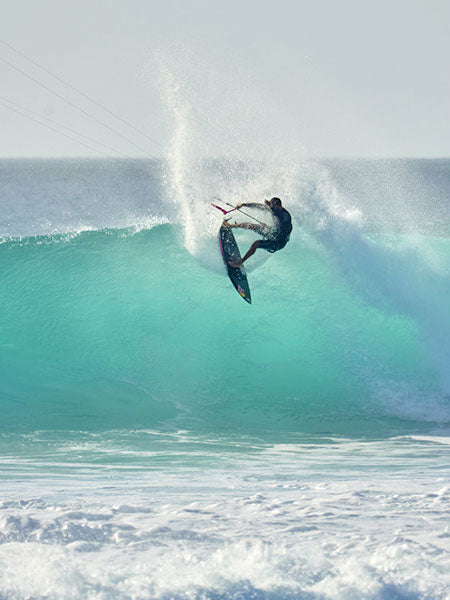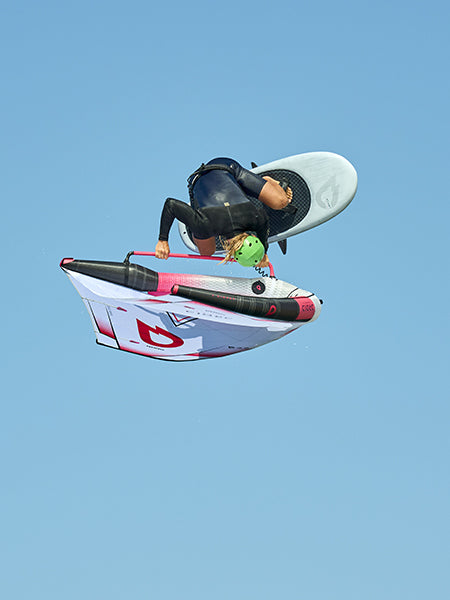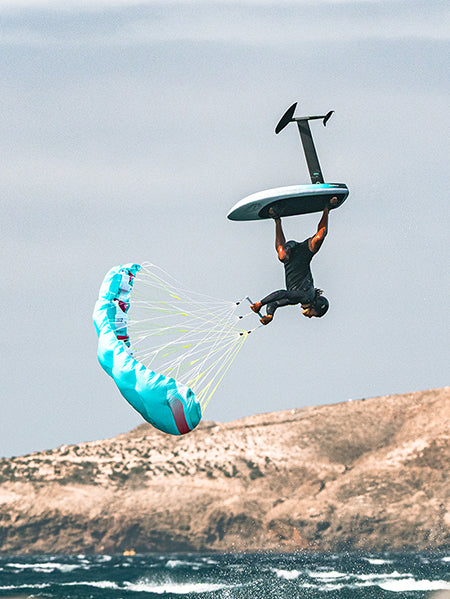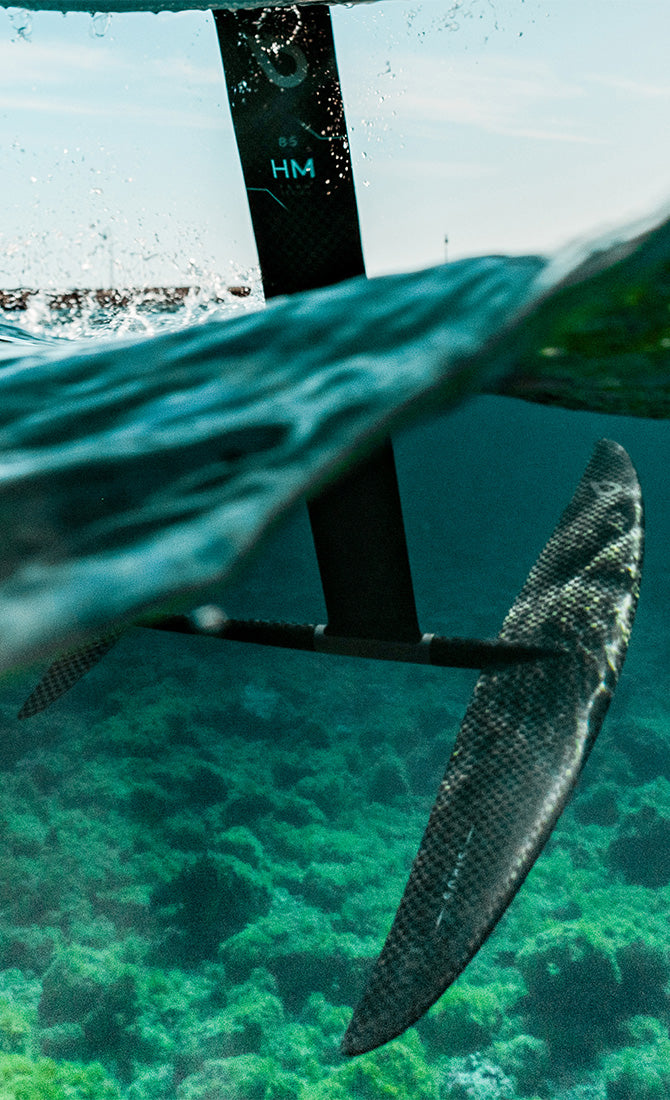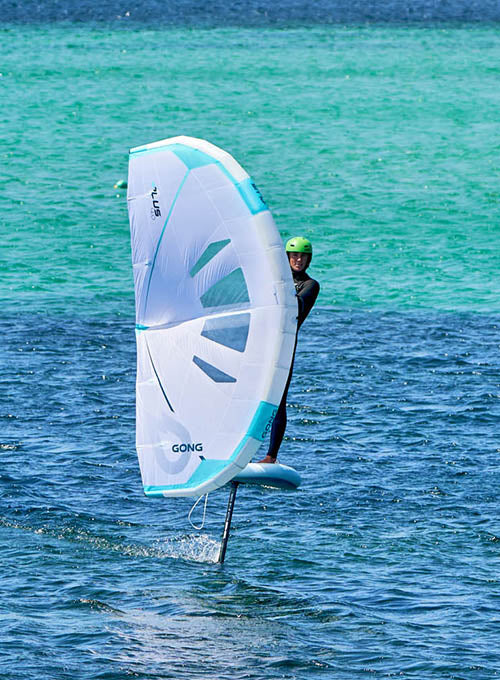Upwind 360
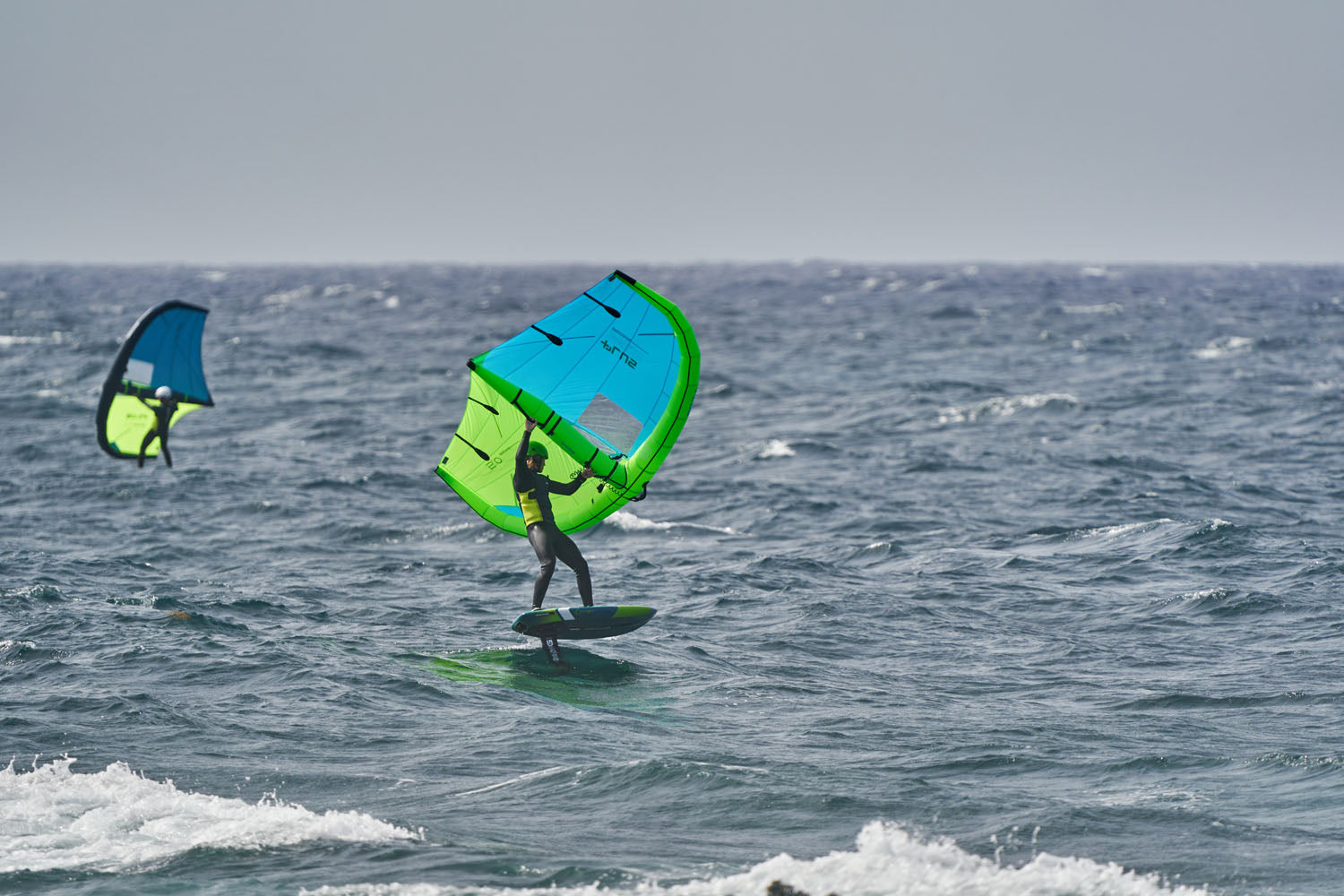
While the 360 jibe gets you into backwind sailing, the upwind 360 reverses the dynamic with a tailwind moment that requires good coordination to cope with the forward pull. Malo shows us how in this How To.
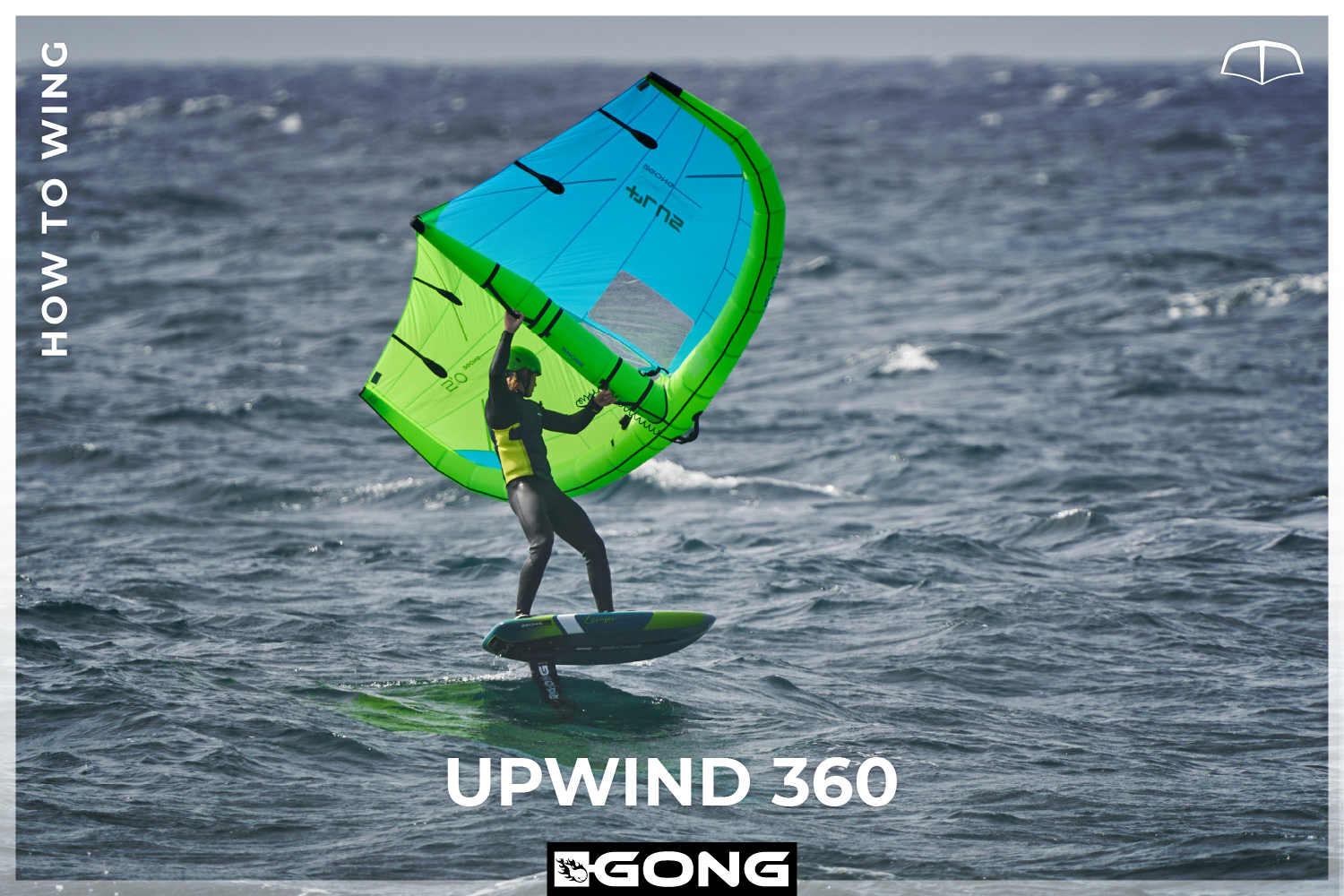
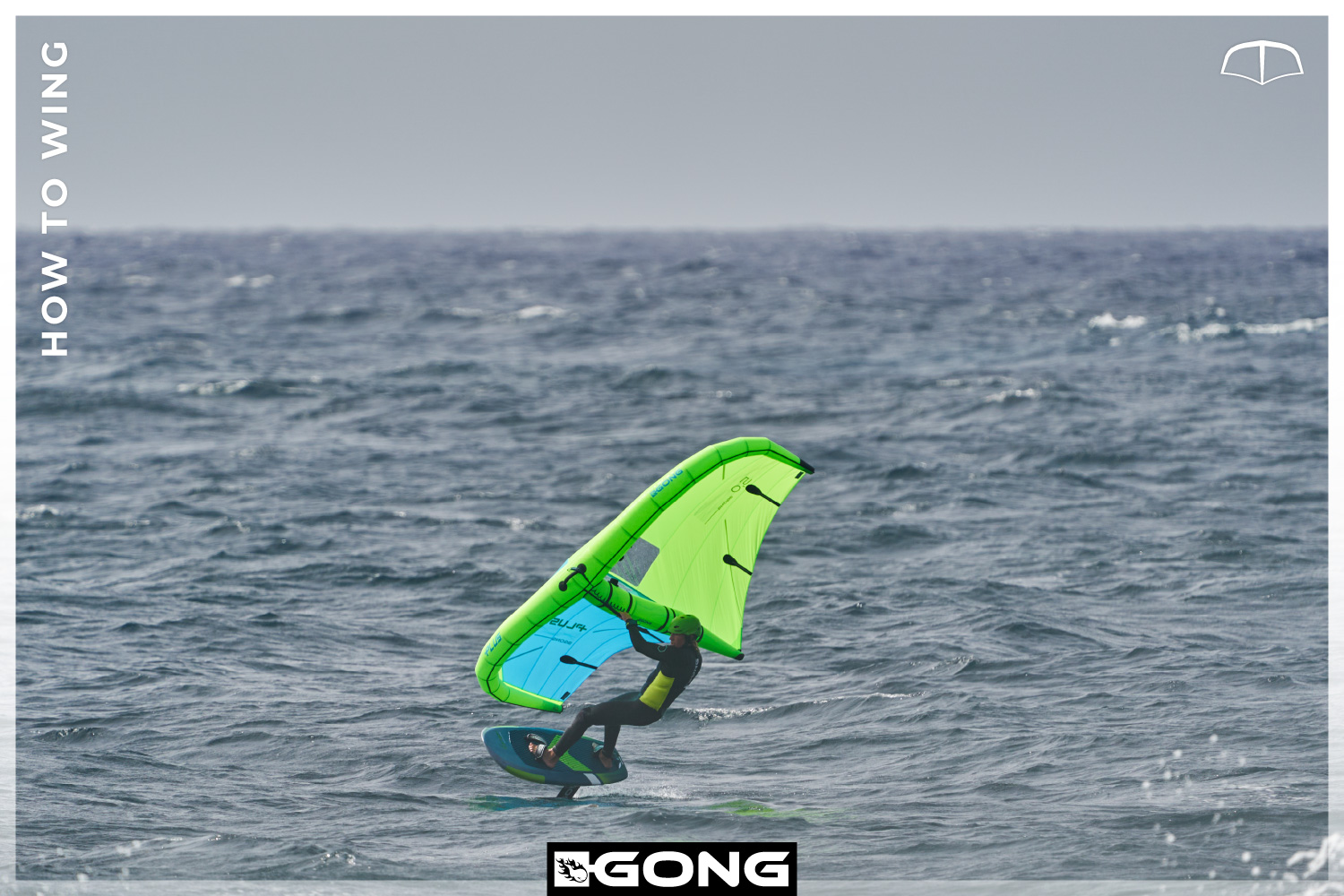

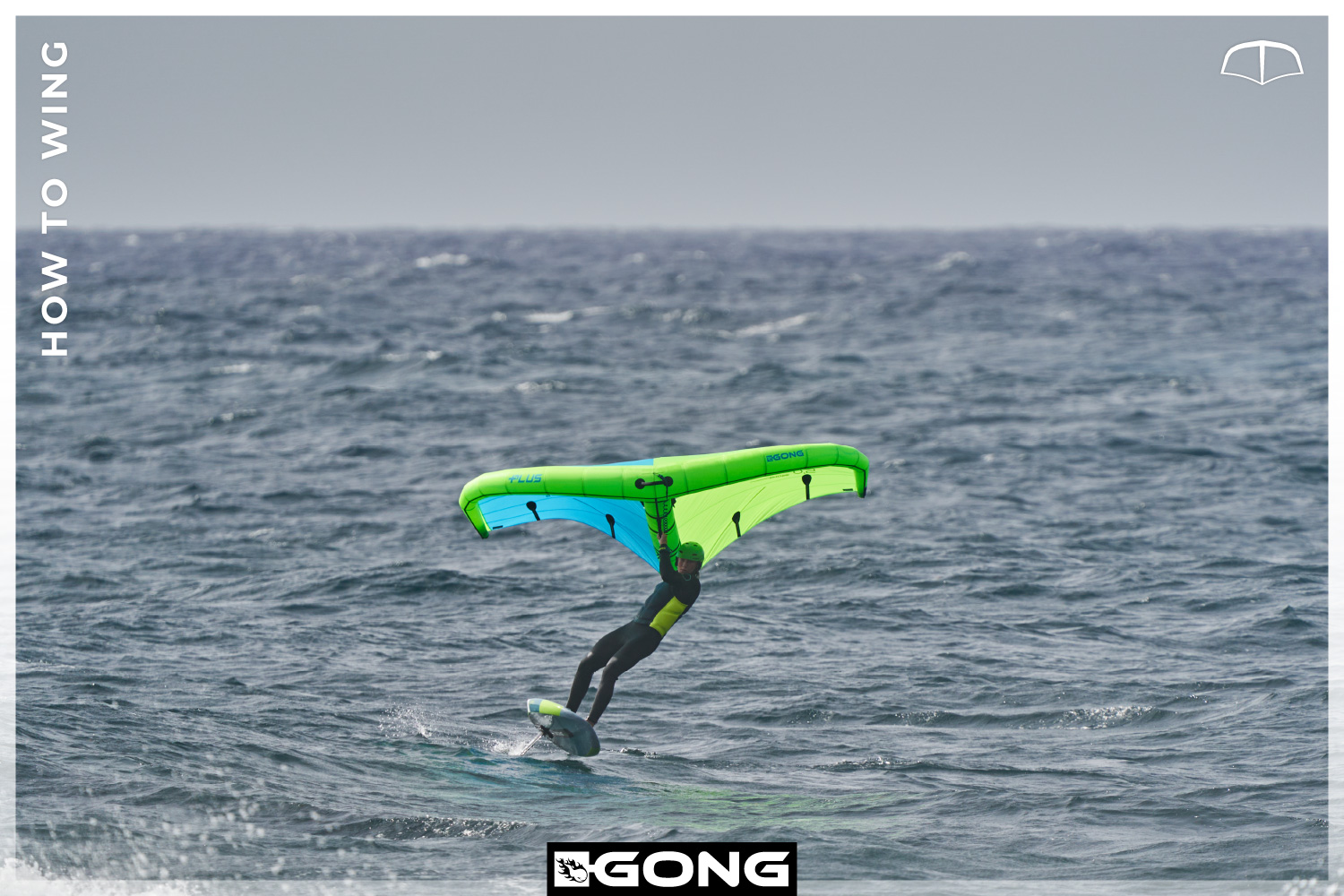
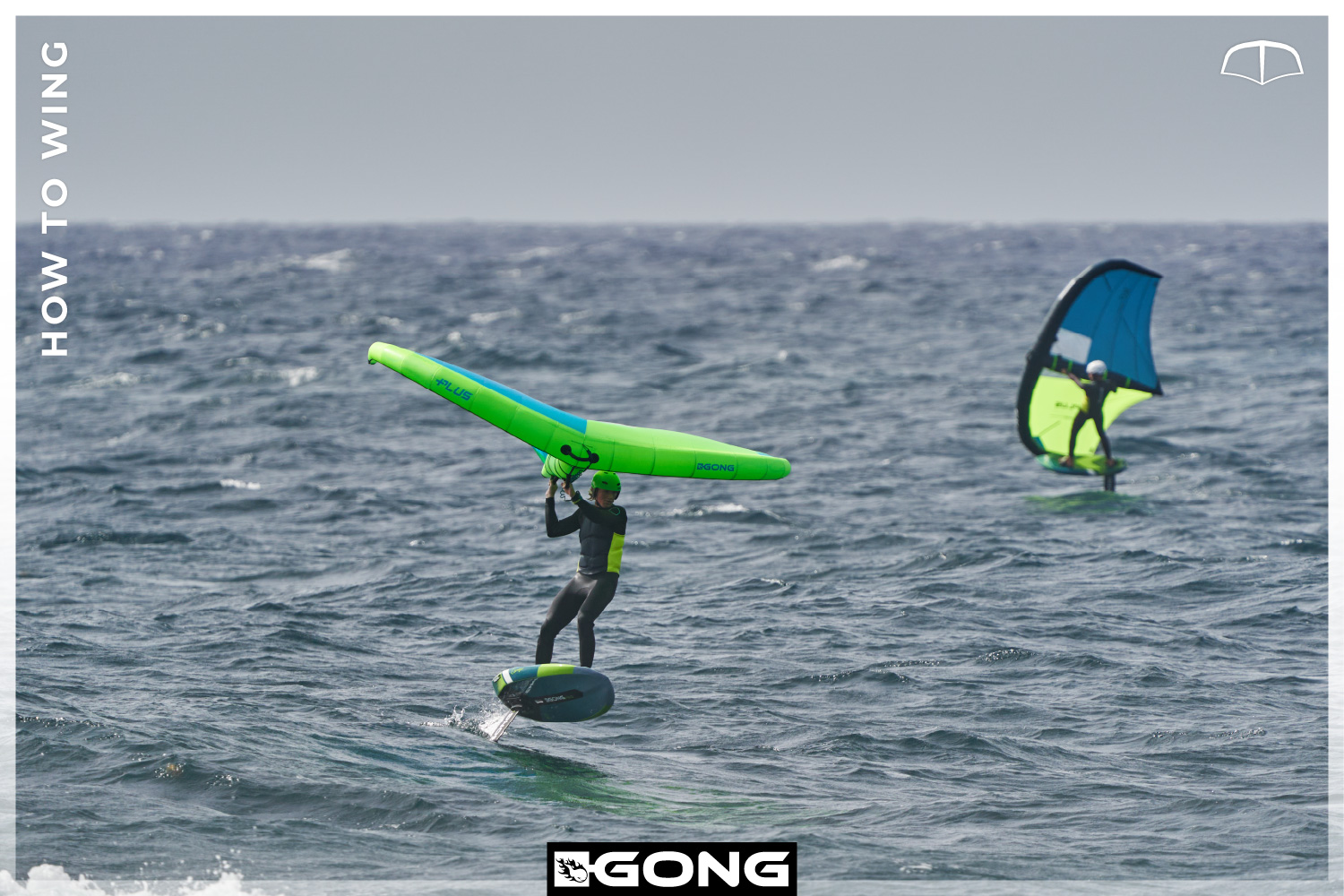
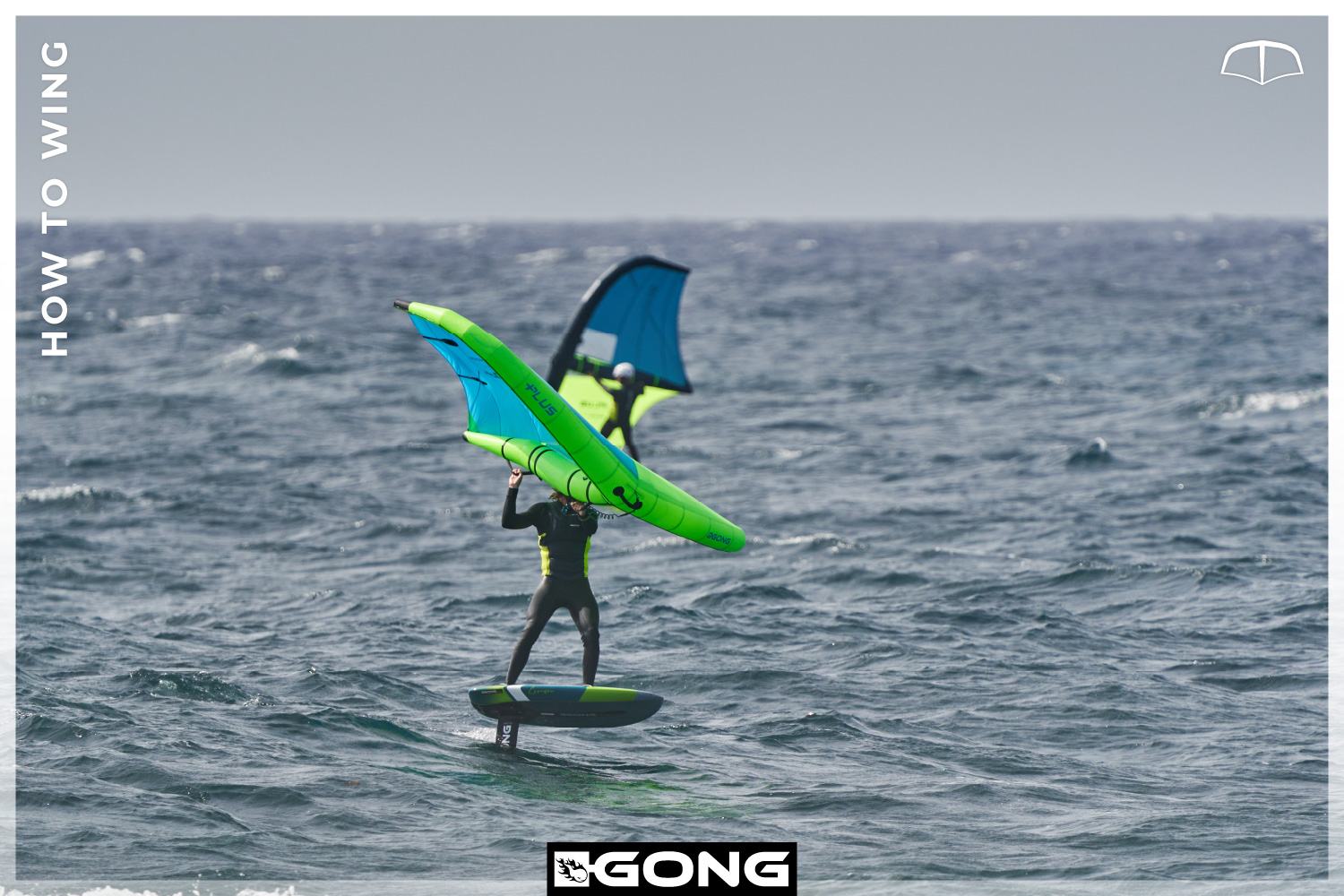
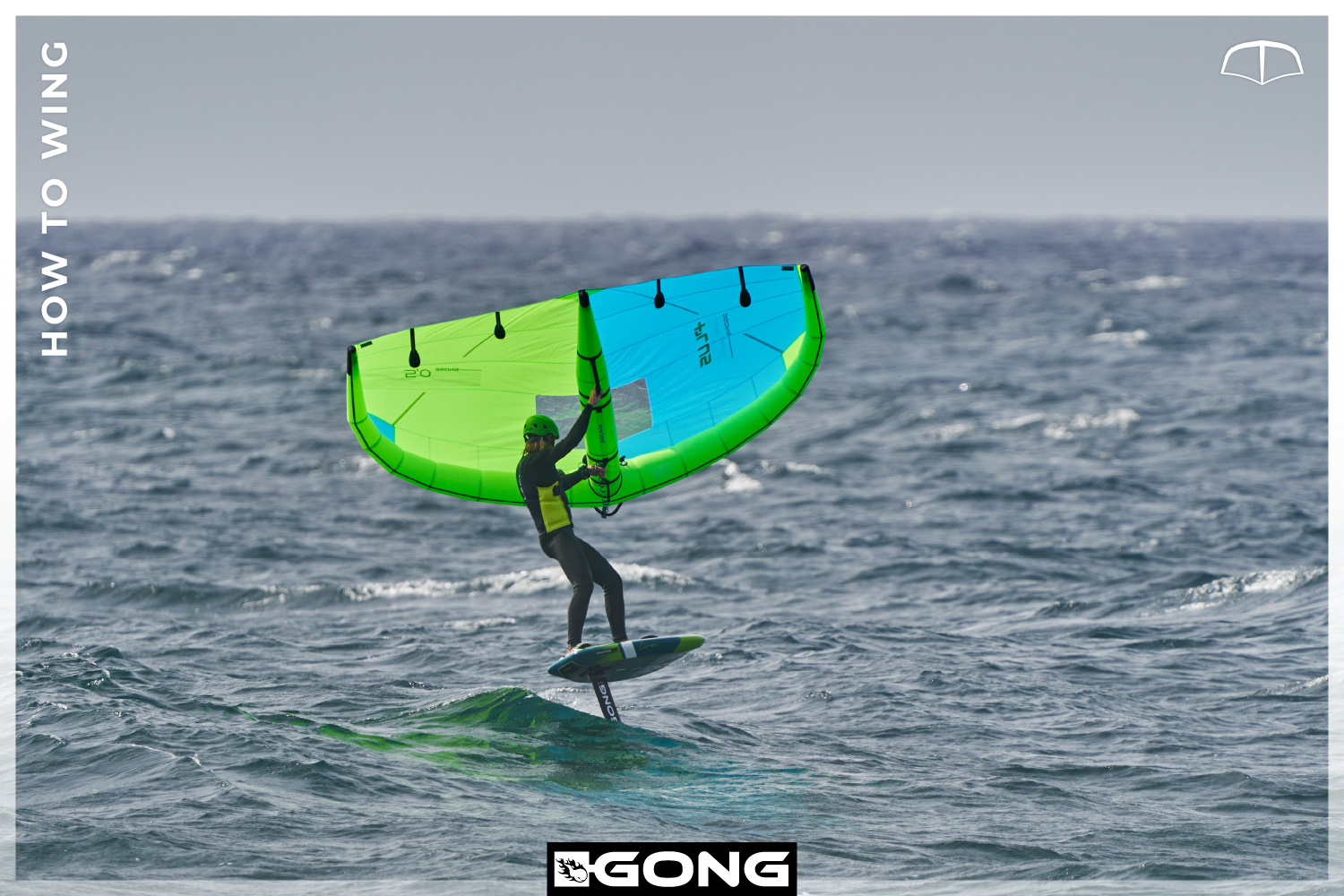
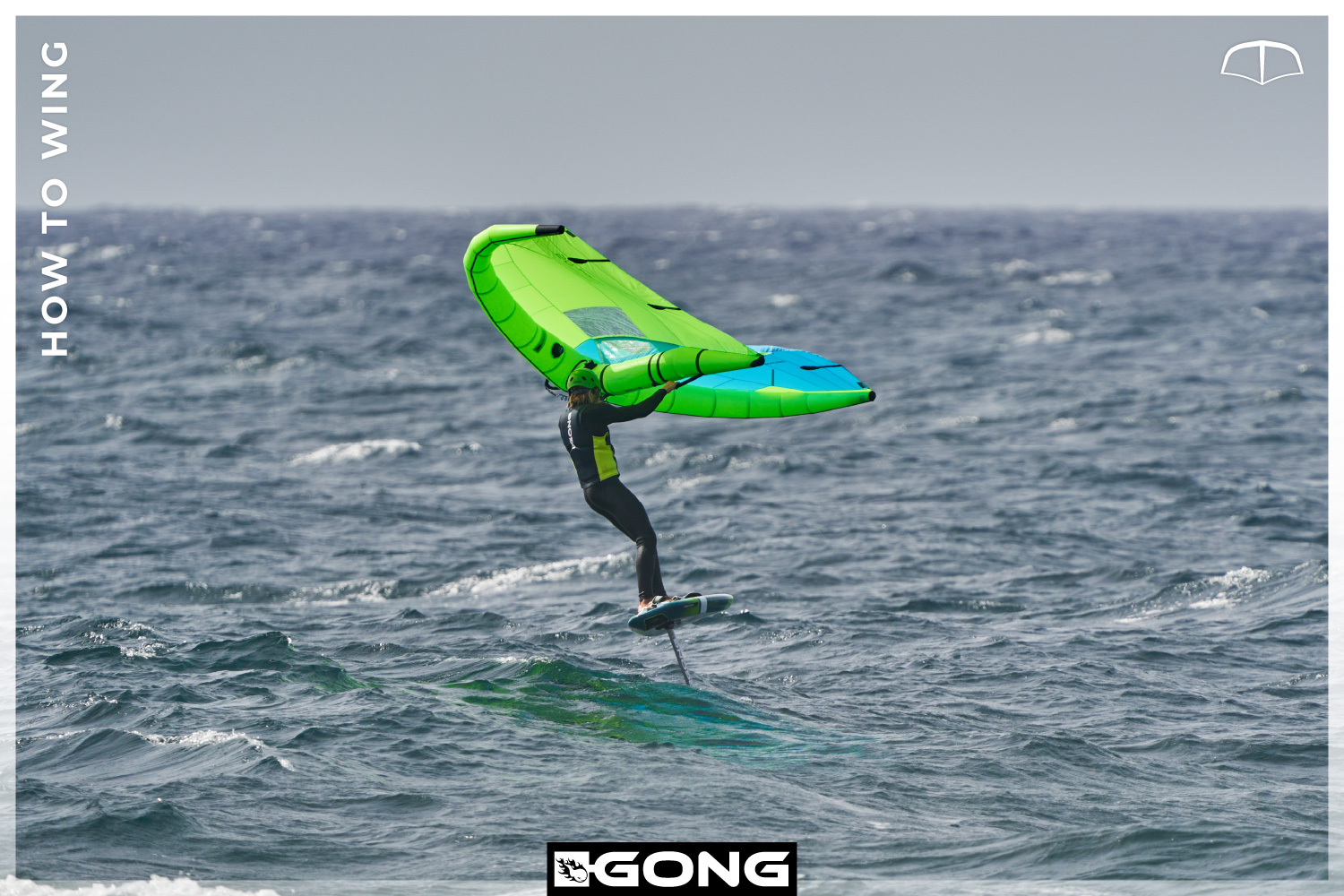
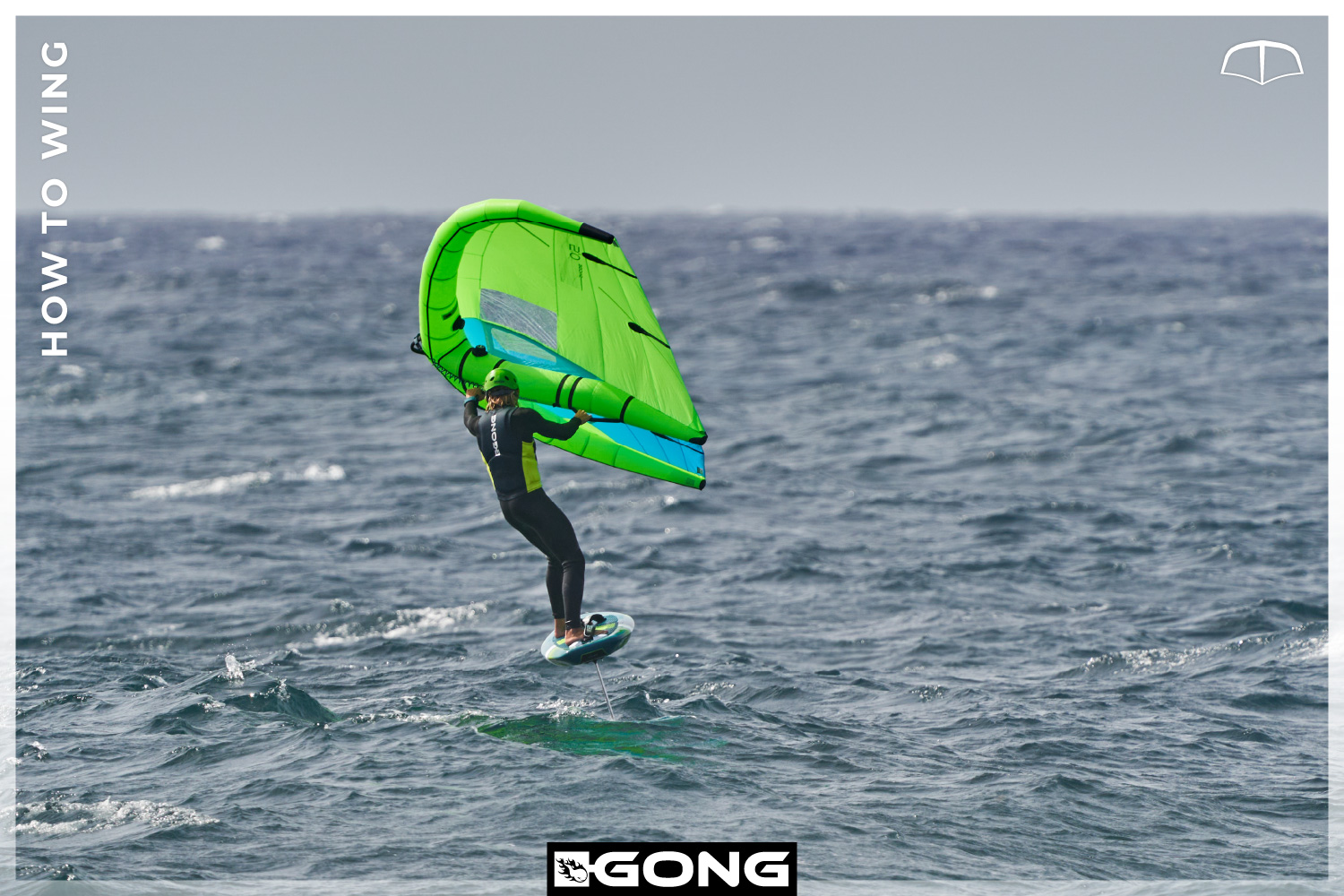
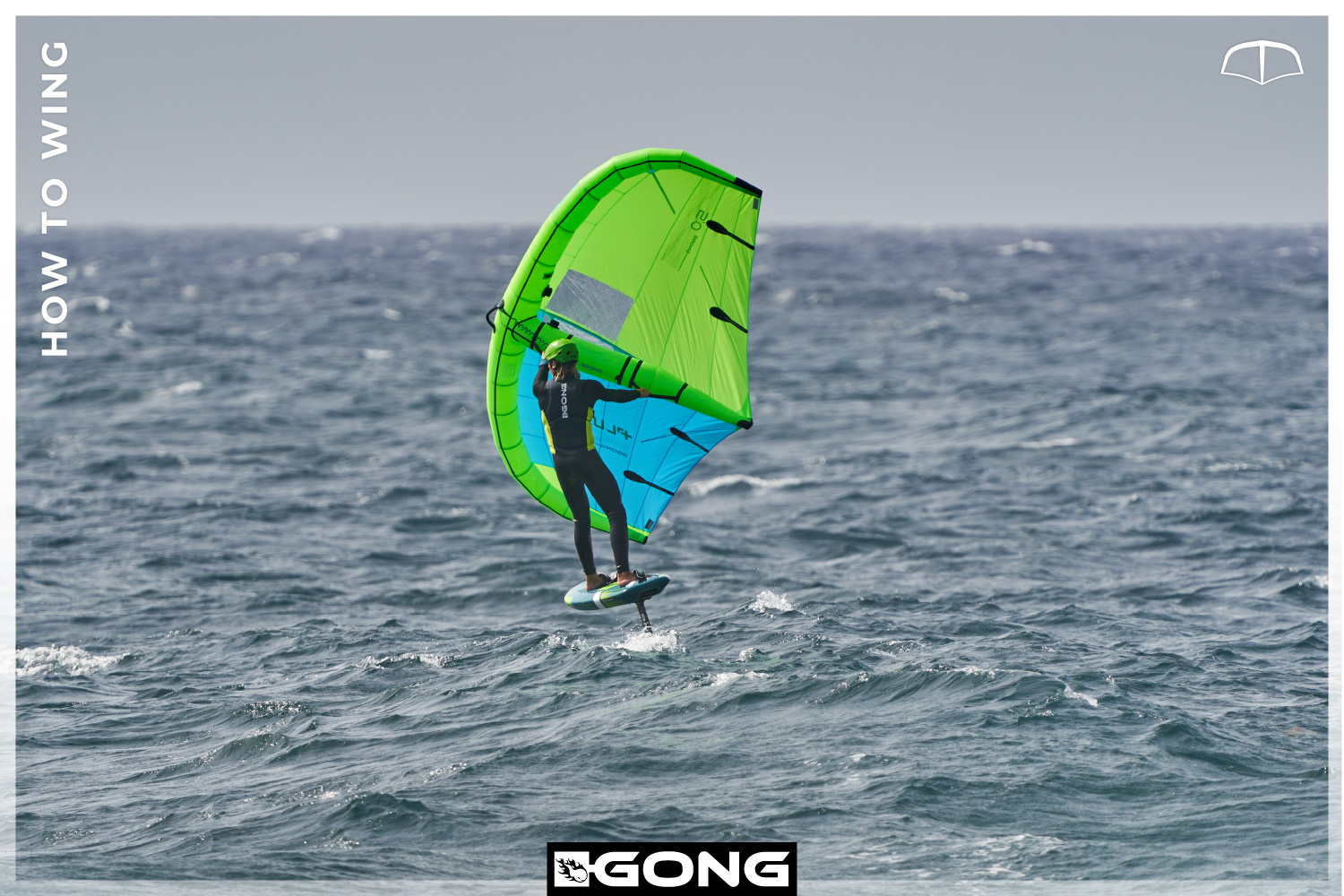
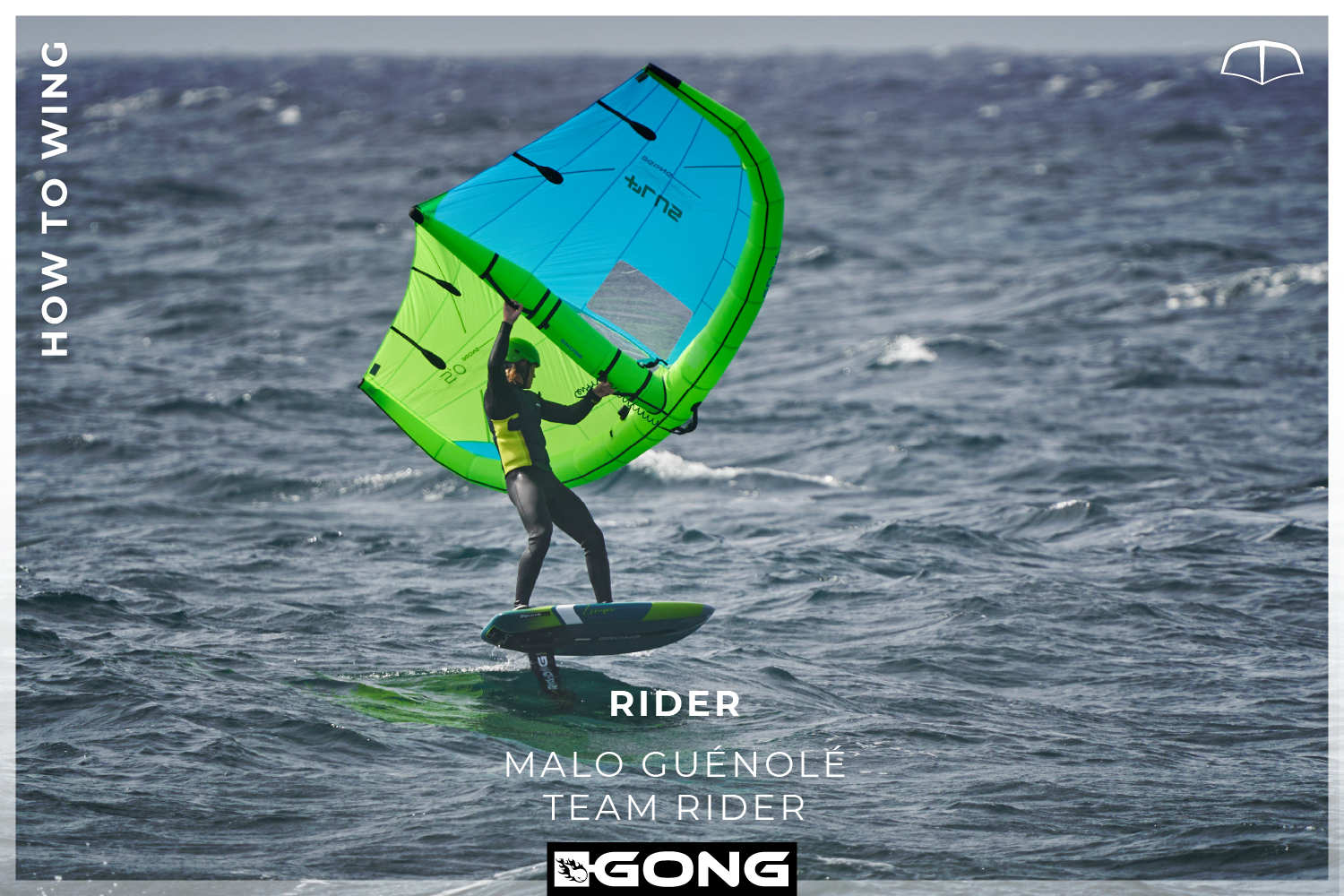
The beginning of the maneuver unfolds like a classic (heel) tack. Head upwind with speed, gradually relieving the tension on the back hand so as not to be pulled back. You have to be ultra fluid and light. Speed is your best ally to be fluid and light. An upwind 360 can be broken down into several phases:
- Pick up speed with heel pressure to initiate the turn towards the wind. Your gaze towards the wind makes your whole body follow the movement. During this phase, put the wing slightly behind you and gradually tighten the curve.
- When you reach the axis of the wind, bring your weight back above the board and position the wing above your head.
- To get the wing on the other tack, lower the front hand and push with the back hand. This downwind phase must be quick so as not to have the wing snatched from your hands. Don’t forget that you also have to manage the board and continue the heel pressure to make a full turn. Looking over the shoulder is your compass for moving forward.
- When you are almost back on your initial tack, raise your front hand so that the wing resumes a normal navigation position. If necessary, pump on the foil to regain speed when exiting the curve. Also help yourself with the wing to get going again.
Second trick: if overpowered, totally bear off when you have crossed the axis of the wind. Not going straight back to beam reach allows you to adjust the traction because riding downwind suffocates the wing a little. Be careful not to go backwind (that’s another move). The other solution is to violently lower the rear hand after crossing the axis of the wind.
Key point: strat with speed but do not make the tip breach too much so as not to lose the lift or cavitate facing the wind.
Variation: do it in front of a wave to take advantage of its energy in order to maintain lift at the key moment (when facing the wind).
